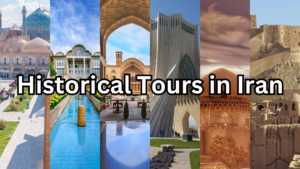
Table of Contents
Introduction
Embarking on historical tours in Jordan is like delving into a living tapestry woven with threads of ancient civilizations, medieval fortresses, and cultural legacies spanning millennia. Situated at the crossroads of continents and civilizations, Jordan boasts a rich historical heritage that beckons travelers and history enthusiasts alike. From the iconic rock-cut architecture of Petra to the imposing Crusader castles scattered across the landscape, each site in Jordan tells a story of resilience, creativity, and the passage of time.
These historical tours offer a fascinating glimpse into the vibrant tapestry of Jordan’s past, revealing insights into ancient urban life, architectural marvels, and the diverse cultural influences that have shaped the region. As travelers traverse the ancient streets of Jerash or stand in awe at the intricately detailed mosaics of Madaba, they not only witness history but also gain a deeper appreciation for the interconnectedness of civilizations throughout history.
Brief overview of Jordan’s rich historical heritage
Jordan’s rich historical heritage is a mosaic of civilizations that have left their indelible mark on its landscapes. From the ancient Nabateans who carved the magnificent city of Petra into rose-red cliffs to the Romans who built grand amphitheaters and temples in Jerash, Jordan’s history is a testament to the ingenuity and cultural richness of its people. The country’s strategic location along ancient trade routes also attracted influences from the Greeks, Byzantines, Crusaders, and Islamic empires, resulting in a diverse tapestry of architecture, art, and traditions.
Importance of historical tours in understanding Jordan’s cultural and historical significance
Historical tours play a pivotal role in unraveling the layers of Jordan’s cultural and historical significance. By exploring archaeological sites, ancient cities, and medieval fortresses, visitors gain a deeper understanding of the civilizations that thrived in this region. These tours offer insights into Jordan’s contributions to art, architecture, religion, and philosophy, fostering a sense of connection to the past and appreciation for the legacies that continue to shape Jordanian identity. Moreover, historical tours promote cultural exchange, tourism, and heritage preservation, ensuring that Jordan’s rich history remains accessible and cherished for generations to come.
Key Historical Sites in Jordan
Petra
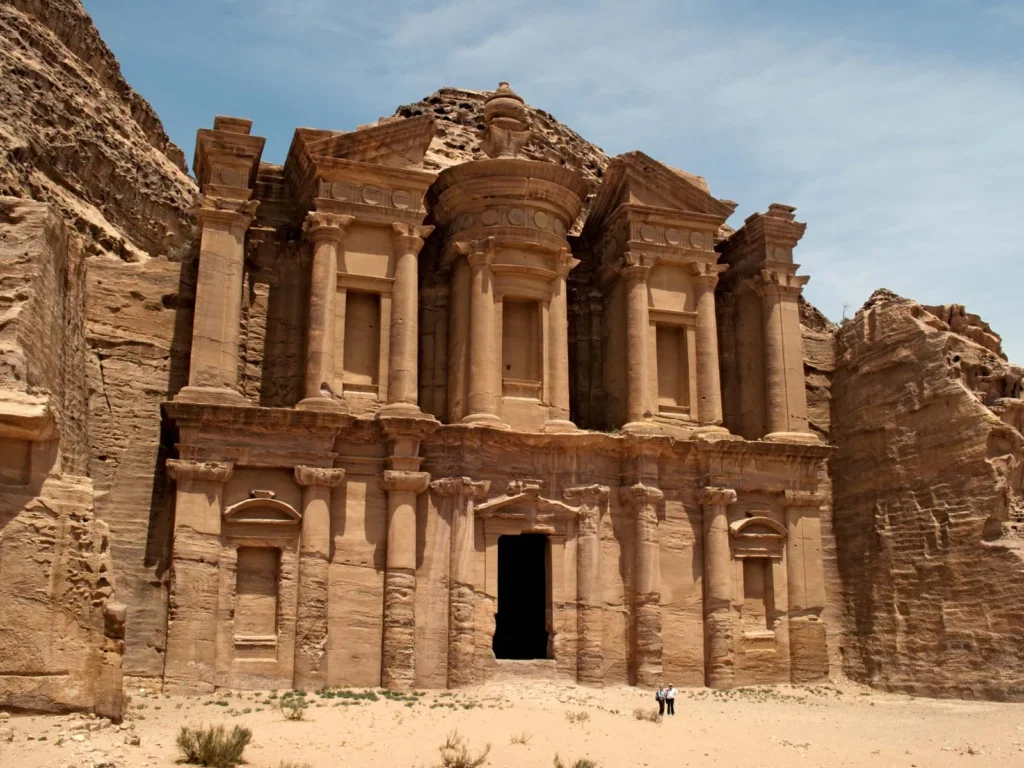
- Rock-Cut Architecture:
- Description: Petra is renowned for its spectacular rock-cut architecture, where entire buildings and structures were carved directly into the rose-red sandstone cliffs. This intricate carving technique reflects the advanced engineering skills of the ancient Nabateans, who inhabited Petra from around the 6th century BCE.
- Details: The rock-cut architecture of Petra includes facades, tombs, temples, and other structures seamlessly integrated into the natural rock formations. The craftsmanship is evident in the detailed carvings, decorative elements, and the use of natural colors from the sandstone.
- Water Conduit System:
- Description: One of Petra’s remarkable feats of engineering is its sophisticated water conduit system. The Nabateans developed an intricate network of channels, cisterns, and aqueducts to harness and distribute water throughout the city, allowing its inhabitants to thrive in an arid desert environment.
- Details: The water conduit system utilized gravity to transport water from nearby springs and reservoirs to various parts of Petra. It enabled irrigation for agriculture, provided water for daily use, and contributed to the city’s resilience and prosperity.
- Notable Structures: a. The Treasury (Al-Khazneh):
- Description: The Treasury is perhaps the most iconic structure in Petra, characterized by its elaborate facade carved into the cliff face. It served as a tomb or ceremonial structure, showcasing intricate Hellenistic and Nabatean architectural styles.
- Details: The Treasury features a towering facade adorned with columns, statues, and intricate reliefs. The interplay of light and shadow enhances its mystique, especially during sunrise and sunset.
- The Monastery (Al-Deir):
- Description: The Monastery is another impressive rock-cut structure located high in the mountains of Petra. It is larger than the Treasury and features a monumental facade with a massive entrance.
- Details: The Monastery facade includes decorative elements such as columns, friezes, and niches. The interior chambers were likely used for religious or ceremonial purposes, showcasing the religious significance of Petra.
- The Siq:
- Description: The Siq is a narrow gorge or canyon that serves as the main entrance to Petra. It winds its way through towering cliffs, creating a dramatic and awe-inspiring approach to the ancient city.
- Details: The Siq features natural rock formations, colorful striations in the cliffs, and occasional carvings and inscriptions. Walking through the Siq is a memorable experience, culminating in the dramatic reveal of the Treasury at its end.
Petra’s rock-cut architecture, water conduit system, and notable structures like the Treasury, the Monastery, and the Siq collectively showcase the ingenuity, artistry, and historical significance of this ancient Nabatean city, making it a UNESCO World Heritage site and a must-visit destination for history and architecture enthusiasts.
Jerash
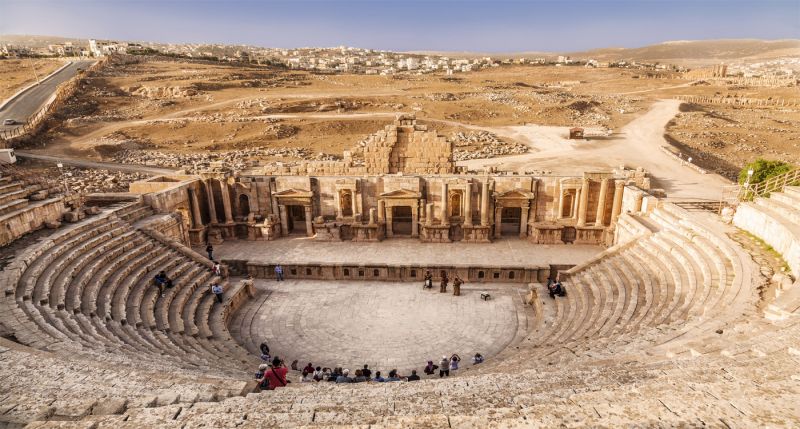
- Greco-Roman Ruins and Urban Life Insights:
- Description: Jerash is renowned for its exceptionally preserved Greco-Roman ruins, offering valuable insights into ancient urban life and civilization. The city’s layout, architecture, and infrastructure provide a glimpse into the daily activities, social structure, and cultural practices of the Greco-Roman era.
- Details: The ruins of Jerash include public spaces, residential areas, markets, baths, and administrative buildings. The city’s grid layout, paved streets, and sewage system highlight its advanced urban planning and infrastructure.
- Theaters, Temples, and Colonnaded Streets: a. Theaters:
- Description: Jerash boasts several well-preserved Roman theaters, showcasing the city’s cultural and entertainment activities. These theaters were venues for theatrical performances, music, and public gatherings.
- Details: Notable theaters in Jerash include the South Theater, with its impressive capacity and acoustics, and the North Theater, which hosted various events and ceremonies.
- Temples:
- Description: Jerash is home to ancient temples dedicated to various gods and goddesses, reflecting religious beliefs and practices of the Greco-Roman period. These temples served as places of worship and cultural significance.
- Details: Temples in Jerash include the Temple of Artemis, dedicated to the goddess Artemis, and the Temple of Zeus, honoring the king of gods in Greek mythology. The architecture and ornamentation of these temples are indicative of the era’s artistic and religious expression.
- Colonnaded Streets:
- Description: Jerash’s colonnaded streets are iconic features of the city, lined with rows of columns that once supported covered walkways. These streets were bustling with commercial activities, showcasing Jerash’s economic prosperity and trade networks.
- Details: The Cardo Maximus is Jerash’s main colonnaded street, adorned with shops, workshops, and public buildings. The columns, pavements, and architectural elements along the Cardo Maximus offer insights into daily life, commerce, and social interactions in ancient Jerash.
Jerash’s Greco-Roman ruins, including theaters, temples, and colonnaded streets, provide a comprehensive view of life in an ancient city, highlighting cultural, social, and architectural aspects of the Greco-Roman era. The city’s meticulous preservation and archaeological significance make it a remarkable destination for history enthusiasts and cultural exploration.
Amman Citadel
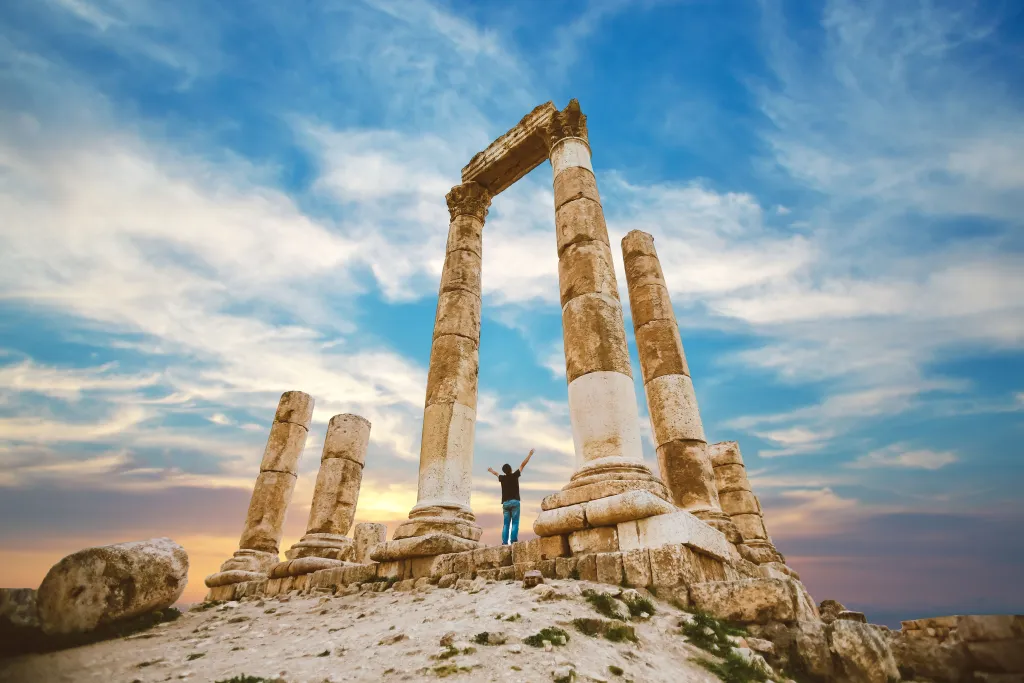
- Location in Jordan’s Capital:
- Description: The Amman Citadel, also known as Jabal al-Qal’a, is situated atop a hill in the heart of Jordan’s capital city, Amman. Its strategic location provides panoramic views of the surrounding urban landscape, including downtown Amman, modern skyscrapers, and historic neighborhoods.
- Details: The Citadel’s elevated position not only offers scenic vistas but also symbolizes its historical and cultural significance as a defensive stronghold and a center of power throughout different periods of Jordan’s history.
- Historical Structures: a. Temple of Hercules:
- Description: The Temple of Hercules is one of the notable historical structures within the Amman Citadel complex. Dating back to the Roman period, it is believed to have been dedicated to the mythological hero Hercules.
- Details: The temple’s ruins include massive columns and remnants of its once-grand architecture, offering insights into Roman religious practices and architectural prowess. The Temple of Hercules is a testament to Amman’s ancient past and the city’s importance in regional trade and culture during Roman rule.
- Umayyad Palace:
- Description: The Umayyad Palace complex within the Amman Citadel represents early Islamic architecture and the Umayyad dynasty’s influence in the region. The palace served as a residence for rulers and administrative center during the Umayyad Caliphate.
- Details: The Umayyad Palace features courtyards, halls, baths, and audience chambers, showcasing the architectural sophistication and cultural fusion of Byzantine, Roman, and Islamic influences. Decorative elements such as mosaics, stucco work, and inscriptions provide insights into Umayyad art and governance.
The Amman Citadel’s location in the capital city of Jordan offers visitors a blend of historical exploration and modern urban experiences. The presence of iconic structures like the Temple of Hercules and the Umayyad Palace within the Citadel’s ancient walls provides a tangible connection to Jordan’s rich history, from ancient civilizations to early Islamic periods.
Umm Qais
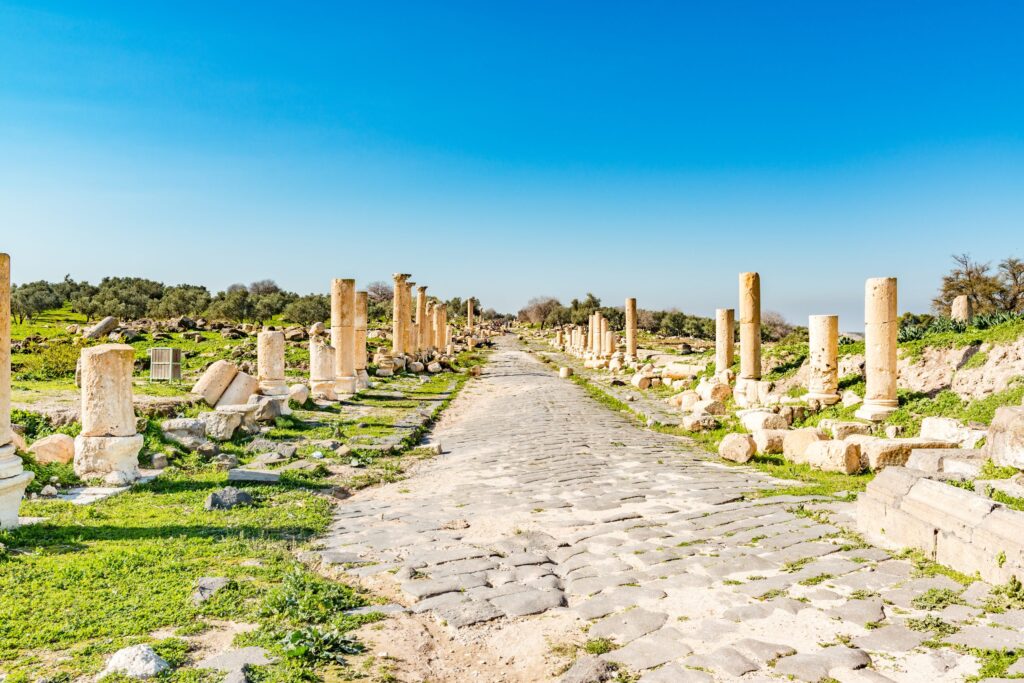
- Panoramic Views and Nearby Landmarks:
- Description: Umm Qais, also known as Gadara in ancient times, is renowned for its breathtaking panoramic views overlooking the Sea of Galilee, the Golan Heights, and the Yarmouk River Valley. These expansive vistas provide a stunning backdrop that enhances the historical and cultural significance of the site.
- Details: Visitors to Umm Qais can enjoy sweeping views of fertile landscapes, ancient ruins, and distant horizons, offering a unique perspective on the region’s geographical features and historical context. Nearby landmarks visible from Umm Qais include other Decapolis cities, ancient trade routes, and natural landmarks like Mount Hermon.
- Roman Ruins Including a Theater and Basilica: a. Theater:
- Description: Umm Qais boasts a well-preserved Roman theater, showcasing the architectural grandeur and cultural importance of entertainment in ancient times. The theater’s location on a hillside enhances its acoustics and provides a backdrop of scenic beauty.
- Details: The Roman theater at Umm Qais features tiered seating, a stage area, and architectural elements typical of Roman theaters, such as the scaenae frons. It served as a venue for theatrical performances, musical events, and public gatherings, reflecting the city’s vibrant cultural life.
- Basilica:
- Description: The basilica at Umm Qais represents the city’s religious and civic architecture during the Roman period. Basilicas were multifunctional structures used for administrative, commercial, and religious purposes.
- Details: The basilica’s ruins include columns, aisles, a central nave, and possibly an apse, typical of Roman basilica architecture. These remnants offer insights into ancient Roman building techniques, interior layouts, and the integration of civic and religious activities.
Umm Qais’s combination of panoramic views, Roman ruins, including a theater and basilica, creates a captivating visitor experience that blends natural beauty with archaeological wonders. The site’s historical significance, cultural heritage, and scenic surroundings make it a must-visit destination for travelers interested in ancient history, architecture, and picturesque landscapes.
Madab
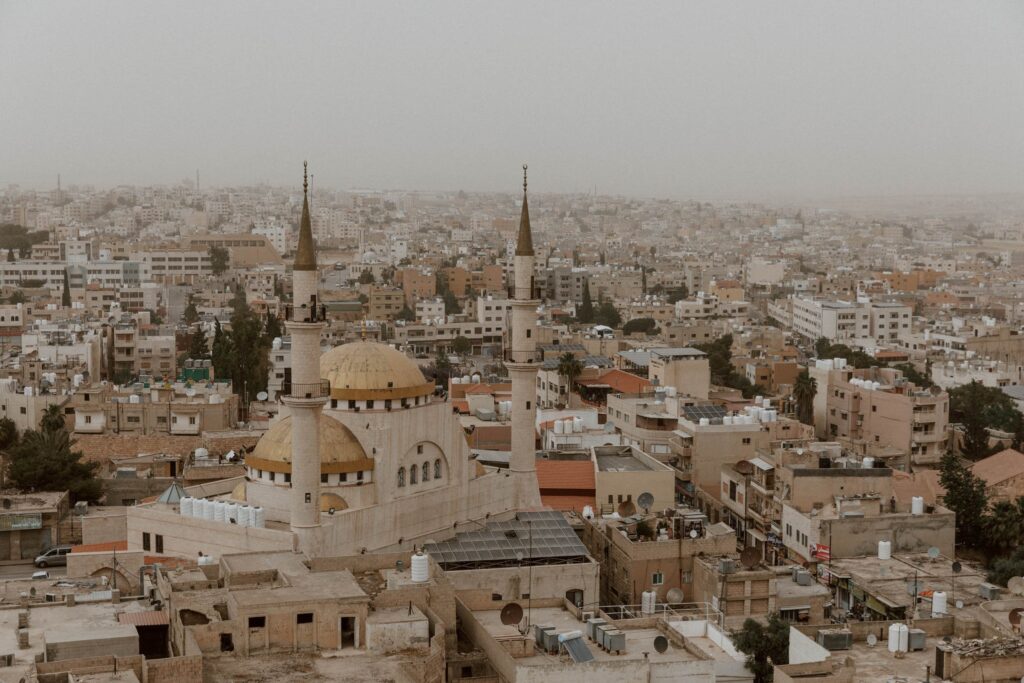
- Byzantine and Umayyad Mosaics:
- Description: Madaba is renowned for its exquisite Byzantine and Umayyad mosaics, showcasing intricate craftsmanship and artistic mastery from different historical periods. These mosaics are found in churches, public buildings, and private residences, reflecting the city’s rich artistic heritage.
- Details: The Byzantine mosaics in Madaba often depict biblical scenes, saints, angels, and geometric patterns, using vibrant colors and meticulous detailing. Umayyad mosaics, influenced by Byzantine and Islamic art, feature floral motifs, arabesques, and inscriptions, showcasing a blend of cultural influences.
- Famous Madaba Map and Its Historical Significance:
- Description: The Madaba Map is a renowned mosaic map located in the Greek Orthodox Church of St. George in Madaba. Created in the 6th century CE, it is one of the oldest surviving maps of the Holy Land and Jerusalem.
- Details: The Madaba Map is a masterpiece of Byzantine cartography, depicting cities, towns, biblical sites, rivers, and mountains with remarkable accuracy. It provides valuable historical and geographical insights into the region during the Byzantine period, including Jerusalem’s layout, landmarks, and religious sites.
The Byzantine and Umayyad mosaics in Madaba showcase the city’s artistic heritage and cultural diversity, with intricate designs and historical narratives preserved in stone. The famous Madaba Map, a testament to ancient cartography and religious significance, adds to Madaba’s allure as a destination for art enthusiasts, historians, and travelers seeking a deeper understanding of the region’s history and heritage.
Kerak Castle
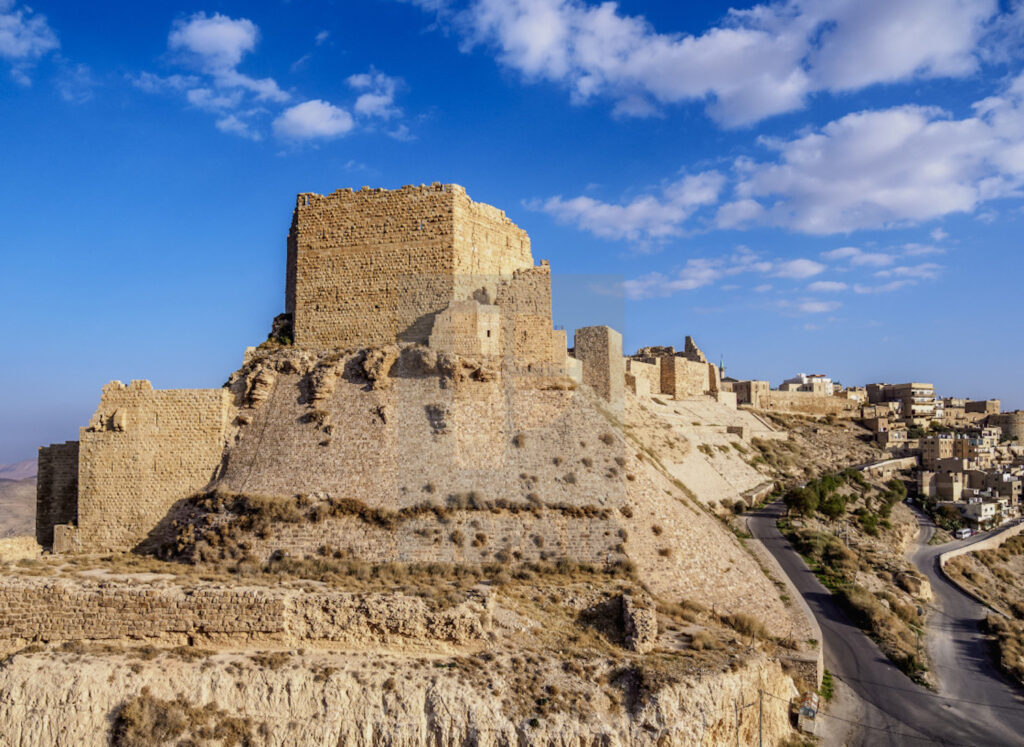
- Description as a Crusader Castle:
- Overview: Kerak Castle, also known as Crac des Moabites, is a significant Crusader castle located in Jordan. Built in the 12th century, it served as a strategic fortress during the Crusades, particularly in defending the Kingdom of Jerusalem against various forces.
- Architecture: Kerak Castle is a formidable fortress characterized by massive walls, towers, and defensive structures typical of Crusader military architecture. Its strategic hilltop location provided clear views of approaching enemies and controlled key trade routes.
- Well-Preserved Halls, Corridors, and Dungeons:
- Interior Features: Within Kerak Castle, visitors can explore well-preserved halls, corridors, and dungeons that offer insights into medieval castle life and defensive strategies. These areas showcase the castle’s layout, functionality, and the living conditions of its inhabitants.
- Defensive Structures: Kerak Castle’s interior includes fortified chambers, storage areas, barracks, and guard posts, highlighting its role as a military stronghold. The dungeons, in particular, reveal aspects of prisoner confinement and medieval justice systems.
Kerak Castle’s description as a Crusader castle emphasizes its historical significance and architectural features typical of fortresses built during the Crusades. Its well-preserved interior spaces, including halls, corridors, and dungeons, provide a tangible connection to medieval military history and castle architecture, making it a compelling destination for history enthusiasts and visitors interested in exploring Jordan’s Crusader heritage.
Mount Nebo
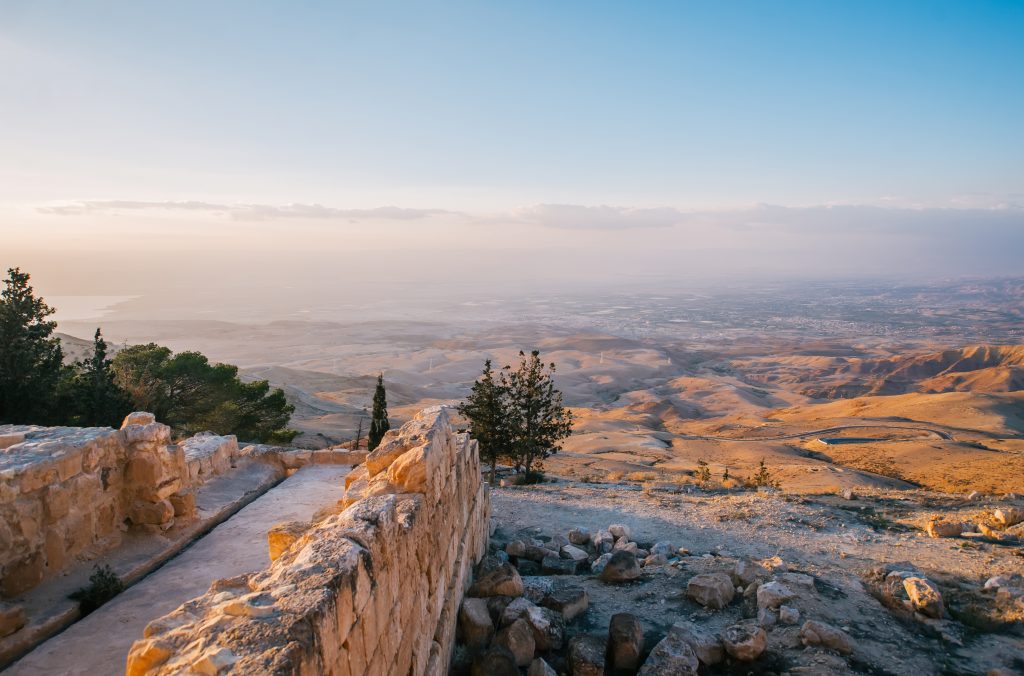
- Beliefs Associated with Mount Nebo:
- Biblical Significance: Mount Nebo holds immense religious significance, particularly in Abrahamic traditions. It is believed to be the place where Moses, a central figure in Judaism, Christianity, and Islam, viewed the Promised Land before his death.
- Judeo-Christian Tradition: In the Bible, Mount Nebo is mentioned as the place from which Moses saw the land of Canaan, a land promised by God to the Israelites. This event is described in Deuteronomy 34:1-4.
- Islamic Tradition: Mount Nebo is also revered in Islam, where it is believed that the Prophet Moses (Musa in Arabic) climbed the mountain and received divine revelations.
- Views of Jordan Valley, Dead Sea, and Jerusalem:
- Scenic Beauty: Mount Nebo offers breathtaking panoramic views of the Jordan Valley, the Dead Sea, and even glimpses of Jerusalem on clear days. These vistas highlight the diverse landscapes of the region, from fertile valleys to the unique Dead Sea coastline.
- Historical and Cultural Significance: The views from Mount Nebo provide a tangible connection to the biblical narratives and historical events associated with the region. Visitors can appreciate the geographical context of ancient stories and understand the strategic importance of the area.
Mount Nebo’s beliefs and views make it a significant pilgrimage site and tourist destination. Its religious associations with Moses and the panoramic views it offers contribute to its appeal for spiritual reflection, historical exploration, and appreciation of natural beauty.
Qasr Amra
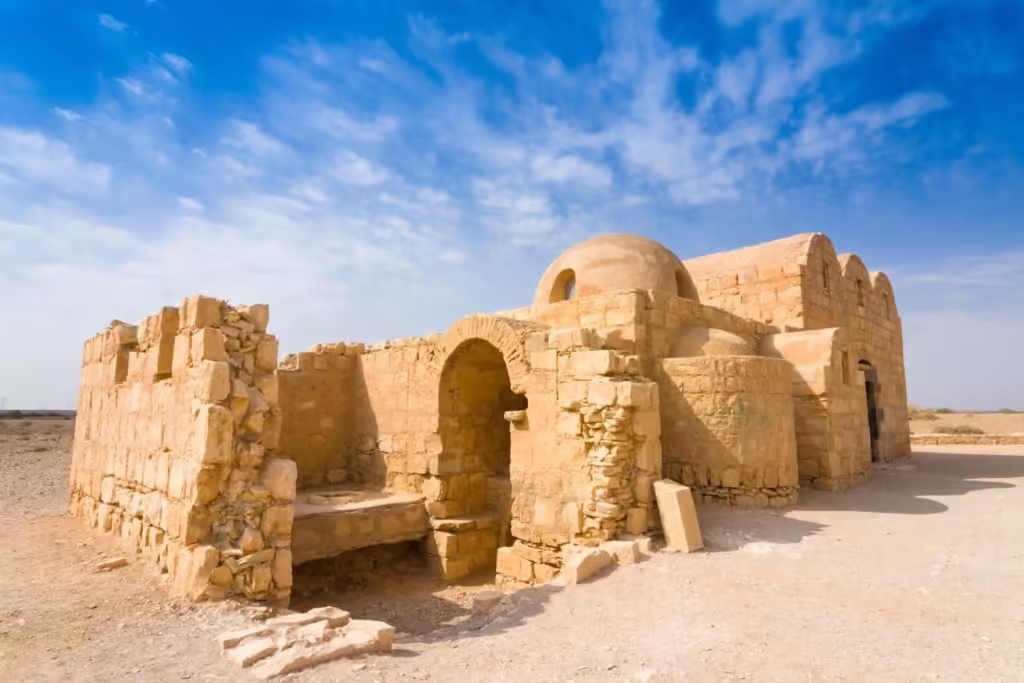
- Desert Castle with Umayyad Frescoes:
- Overview: Qasr Amra is a well-preserved desert castle located in Jordan, dating back to the early 8th century during the Umayyad Caliphate. It is renowned for its remarkable Umayyad frescoes, which adorn the interior walls and ceilings of the castle.
- Architectural Style: Qasr Amra’s architectural style reflects Umayyad innovations in desert architecture, featuring a central courtyard, audience halls, baths, and living quarters. The castle’s strategic location along ancient trade routes contributed to its historical significance.
- Depictions in Frescoes and Their Historical Context:
- Fresco Themes: The frescoes in Qasr Amra depict a variety of themes, including hunting scenes, bathhouse activities, courtly life, animals, and celestial motifs. These frescoes showcase the artistic skills and cultural influences of the Umayyad period.
- Historical Significance: The depictions in the frescoes provide valuable insights into Umayyad society, leisure activities, clothing styles, and artistic preferences. They also reflect influences from Byzantine, Roman, and Sassanian artistic traditions, highlighting cultural exchanges during the Umayyad era.
- Symbolism and Iconography: Some frescoes in Qasr Amra include symbolic elements and iconography related to power, nature, mythology, and religious beliefs. Interpretations of these symbols offer glimpses into Umayyad ideologies and worldviews.
Qasr Amra’s status as a desert castle with Umayyad frescoes makes it a unique historical and artistic treasure. The frescoes’ depictions and their historical context provide a window into Umayyad culture, society, and artistic expression, making Qasr Amra a significant site for understanding the complexities of the early Islamic period in the region.
Shobak Castle
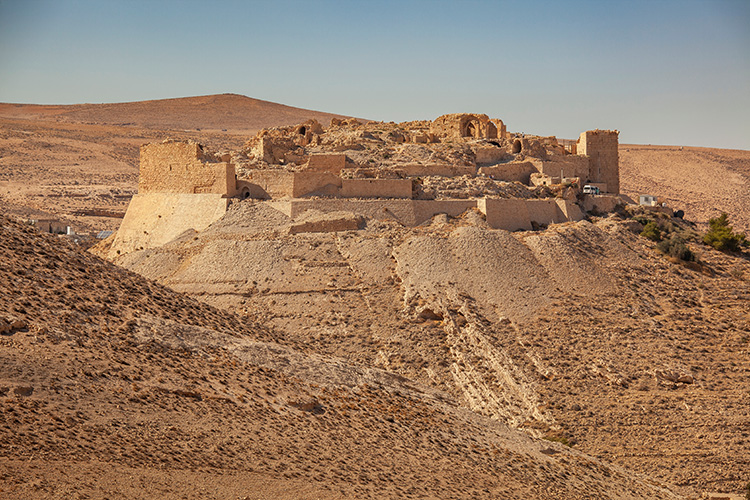
- Description as a Crusader Castle on a Hilltop:
- Overview: Shobak Castle, also known as Montreal, is a prominent Crusader castle situated on a hilltop in Jordan. It was constructed in the 12th century by the Crusaders as part of their defensive network in the region.
- Hilltop Location: The castle’s strategic hilltop location provided a vantage point for monitoring and defending key trade routes, including the ancient caravan routes between Egypt, Syria, and Arabia.
- Military Architecture and Historical Significance:
- Architectural Features: Shobak Castle exhibits classic Crusader military architecture, characterized by thick walls, towers, battlements, and a central keep. The castle’s design focused on defense, with elements such as arrow slits, drawbridges, and narrow passages.
- Historical Significance: Shobak Castle played a crucial role in the Crusaders’ efforts to control and protect the Holy Land during the medieval period. It served as a strategic stronghold against Muslim forces and was part of a network of Crusader fortifications in the region.
- Capture and Legacy: Despite changing hands several times between Crusaders and Muslim forces, Shobak Castle eventually fell to the Ayyubids in the late 12th century. Its capture marked a significant turning point in the Crusades, illustrating the challenges faced by Crusader forces in maintaining control over the region.
Shobak Castle’s description as a Crusader castle on a hilltop emphasizes its historical importance as a defensive stronghold and its architectural features typical of Crusader military fortifications. The castle’s strategic location and role in medieval conflicts add to its significance as a historical and cultural landmark in Jordan.
Ajloun Castle
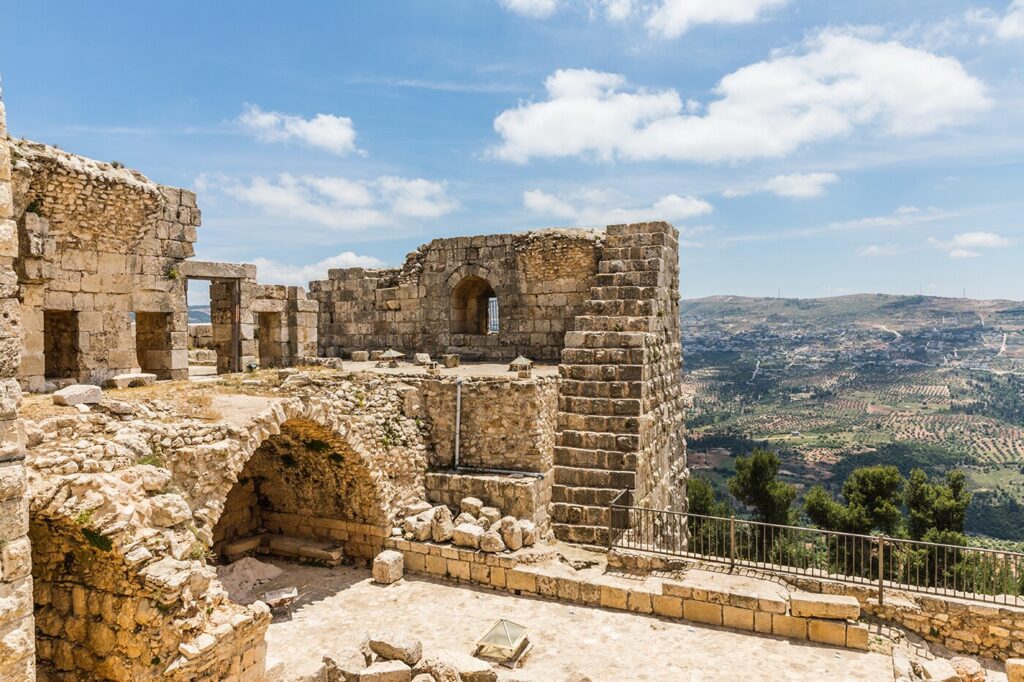
- Islamic Fortress and Its Strategic Location:
- Overview: Ajloun Castle, also known as Qal’at Ar-Rabad, is a significant Islamic fortress located in northern Jordan. It was built in the 12th century by the Ayyubids to defend against Crusader attacks and control key trade routes.
- Islamic Architecture: Ajloun Castle showcases classic Islamic military architecture, featuring sturdy walls, towers, arrow slits, and defensive structures designed to withstand sieges and assaults.
- Strategic Importance: The castle’s location on a hilltop provided strategic advantages, including commanding views of surrounding areas, control over nearby roads, and a vantage point for communication and defense.
- Panoramic Views and Historical Insights:
- Scenic Beauty: Ajloun Castle offers panoramic views of the surrounding countryside, including rolling hills, forests, and agricultural lands. Visitors can appreciate the natural beauty of the region and understand its geographical importance.
- Historical Significance: The castle’s historical insights provide a window into medieval Islamic military strategies, defensive architecture, and regional politics during the Crusader period. It represents the efforts of Islamic rulers to protect their territories and maintain sovereignty in the face of external threats.
- Cultural Heritage: Ajloun Castle’s role in Islamic history and its architectural features contribute to Jordan’s cultural heritage, showcasing the region’s rich legacy of Islamic civilization and military prowess.
Ajloun Castle’s description as an Islamic fortress highlights its strategic importance, architectural significance, and historical role in the region’s defense and cultural heritage. The castle’s panoramic views and historical insights offer visitors a memorable experience and a deeper understanding of Jordan’s medieval history and Islamic legacy.
Benefits of Historical Tours in Jordan
Historical tours in Jordan Asia offer a multitude of benefits that enrich travelers’ experiences and deepen their understanding of the region’s rich cultural heritage. Here are some key benefits:
- Historical and Cultural Immersion: Historical tours immerse visitors in Jordan’s ancient civilizations, allowing them to explore archaeological sites, ancient cities, and cultural landmarks firsthand. This immersive experience fosters a deeper appreciation for the country’s history, traditions, and diverse cultural influences.
- Educational Insights: These tours provide educational insights into Jordan’s historical significance, including its role in ancient trade routes, interactions between civilizations, and contributions to art, architecture, and science. Visitors gain knowledge about ancient civilizations such as the Nabateans, Romans, Byzantines, and Islamic empires.
- Architectural Marvels: Jordan is home to remarkable architectural marvels such as Petra’s rock-cut structures, Roman theaters in Jerash, Crusader castles like Kerak and Shobak, and Umayyad desert castles with intricate frescoes. Exploring these sites offers a firsthand glimpse into ancient and medieval architectural techniques and innovations.
- Cultural Exchange and Understanding: Engaging with Jordan’s historical sites fosters cultural exchange and understanding. Visitors learn about the country’s diverse cultural heritage, religious traditions, and societal norms, promoting cross-cultural appreciation and dialogue.
- Heritage Preservation: Tourism plays a vital role in heritage preservation by supporting the conservation and restoration of historical sites, artifacts, and monuments. Revenue generated from historical tours contributes to ongoing efforts to safeguard Jordan’s cultural legacy for future generations.
- Enriching Travel Experiences: Historical tours add depth and richness to travel experiences, offering opportunities for exploration, discovery, and personal enrichment. Visitors can delve into centuries-old ruins, decipher ancient inscriptions, and envision the vibrant tapestry of civilizations that once thrived in Jordan.
- Promotion of Tourism and Economy: Historical tourism promotes Jordan as a top destination for cultural enthusiasts, history buffs, and curious travelers. It contributes to the country’s tourism sector, supporting local businesses, hospitality services, and economic growth.
In essence, historical tours in Jordan not only unravel the mysteries of the past but also foster cultural appreciation, educational insights, and sustainable tourism practices that benefit both visitors and the local communities.
Understanding Jordan’s Diverse Historical Periods:
Historical tours provide a comprehensive overview of Jordan’s rich history, spanning diverse periods such as the Nabatean era, Roman rule, Byzantine influence, Islamic caliphates, Crusader presence, and Ottoman legacy. This understanding fosters a nuanced perspective on the country’s evolution over millennia.
Appreciation of Architectural, Artistic, and Cultural Heritage:
Visitors on historical tours marvel at the intricate architecture of iconic sites like Petra’s rock-cut temples, Jerash’s Greco-Roman ruins, and Umayyad desert castles adorned with stunning frescoes. They gain a deep appreciation for Jordan’s artistic traditions, craftsmanship, and cultural diversity.
Insights into Ancient Civilizations, Medieval History, and Islamic Heritage:
Historical tours offer insights into the lifestyles, beliefs, and achievements of ancient civilizations like the Nabateans, the strategic maneuvers of Crusader knights, and the cultural renaissance during the Islamic Golden Age. This immersion in history enriches visitors’ understanding of global heritage and human achievements.
Promotion of Tourism and Preservation of Historical Sites:
By showcasing Jordan’s historical treasures, these tours promote tourism and encourage responsible travel practices. Revenue generated from tourism contributes to the conservation and preservation of archaeological sites, ensuring their protection for future generations.
Contribution to Local Economy and Cultural Exchange:
Historical tours bolster the local economy by supporting businesses, artisans, and communities near historical sites. They also foster cultural exchange as visitors engage with local traditions, cuisine, and customs, promoting mutual understanding and appreciation.
In essence, historical tours in Jordan serve as gateways to a world of ancient wonders, cultural diversity, and profound insights into human history. They play a pivotal role in preserving heritage, promoting sustainable tourism, and fostering cross-cultural connections that transcend borders and time periods.
Conclusion
Historical tours in Jordan offer a captivating journey through time, revealing the layered tapestry of civilizations, cultures, and legacies that have shaped the country’s vibrant heritage. From the ancient wonders of Petra and Jerash to the medieval fortresses of Kerak and Shobak, each site tells a compelling story of human ingenuity, resilience, and creativity.
By embarking on these tours, travelers not only gain a deeper understanding of Jordan’s diverse historical periods but also develop a profound appreciation for its architectural marvels, artistic treasures, and cultural nuances. The insights gleaned from exploring ancient civilizations, medieval history, and Islamic heritage contribute to a broader perspective on global heritage and human achievements.
Moreover, historical tours play a crucial role in promoting tourism, preserving historical sites, and supporting the local economy. They serve as catalysts for sustainable travel practices, responsible tourism initiatives, and meaningful cultural exchange experiences that foster mutual understanding and appreciation.
In conclusion, historical tours in Jordan offer a unique blend of education, exploration, and enrichment, making them a compelling choice for travelers seeking to unravel the mysteries of the past while forging connections with the present and shaping a more culturally aware future.
Read More Historical Tours in Turkey

